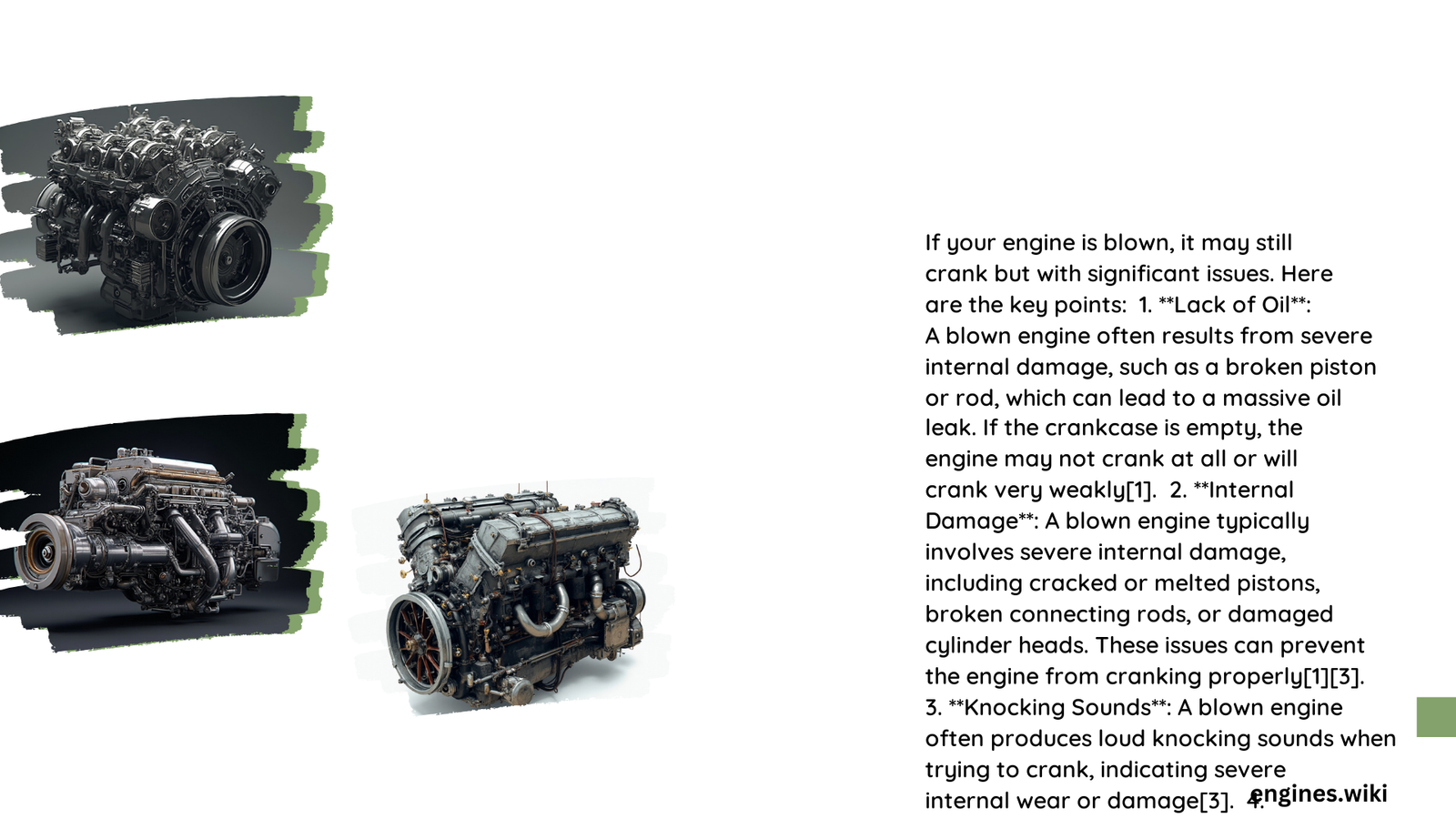When an engine experiences severe damage, the complexity of its cranking behavior can be perplexing for vehicle owners. A blown engine might still attempt to crank, creating a misleading impression of potential functionality. Understanding the nuanced signs of engine failure requires comprehensive diagnostic insight, involving compression tests, mechanical evaluation, and careful interpretation of mechanical symptoms.
Can a Blown Engine Still Rotate?
What Determines Engine Cranking Capability?
A blown engine can potentially still crank due to several mechanical factors:
- Mechanical Components Integrity
- Starter motor functionality
- Battery voltage stability
-
Minimal internal mechanical connection
-
Compression System Status
- Partial cylinder compression
- Mechanical linkage preservation
How Do Diagnostic Tests Reveal Engine Health?
Compression Test Methodology
| Test Type | Diagnostic Insight | Cost Range | Duration |
|---|---|---|---|
| Compression Test | Measures cylinder pressure | $50-$150 | 30-60 minutes |
| Leak-Down Test | Identifies compression leak sources | $50-$150 | 30-60 minutes |
| Oil Analysis | Detects internal wear particles | $20-$50 | 2-3 days |
What Specific Symptoms Indicate a Blown Engine?
Critical Warning Signs
- Auditory Indicators
- Persistent knocking sounds
- Unusual grinding noises
-
Metallic scraping sensations
-
Visual Performance Markers
- Excessive oil consumption
- Blue/white exhaust smoke
- Significant power loss
Can Cranking Occur with Severe Engine Damage?
Surprisingly, a blown engine might still demonstrate cranking capability due to:
- Residual mechanical connections
- Partial compression maintenance
- Starter motor functionality
What Professional Diagnostics Reveal?
Automotive experts recommend comprehensive evaluation through:
- Thorough compression measurements
- Detailed mechanical inspection
- Advanced diagnostic scanning
- Professional mechanical assessment
Economic Considerations of Engine Failure
Repair vs. Replacement Cost Comparison
| Repair Option | Estimated Cost | Complexity | Recommended Scenario |
|---|---|---|---|
| Minor Repair | $500-$2,000 | Low | Minimal internal damage |
| Major Overhaul | $2,500-$4,500 | High | Significant component failure |
| Complete Replacement | $4,000-$8,000 | Extreme | Catastrophic engine damage |
Final Technical Assessment
While an engine might technically crank with severe damage, continued operation risks:
- Complete mechanical failure
- Exponential repair costs
- Potential safety hazards
Professional Recommendation: Immediate professional diagnostic evaluation is crucial to prevent further mechanical deterioration.
Preventive Maintenance Strategies
- Regular oil changes
- Consistent mechanical inspections
- Timely addressing warning indicators
- Professional annual evaluations
Conclusion

A blown engine’s ability to crank doesn’t guarantee operational integrity. Comprehensive diagnostic testing remains the most reliable method to assess true mechanical condition.
